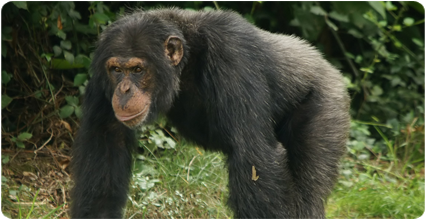
A new study led by researchers from the Institut Català de Paleontologia Miquel Crusafont (ICP) reveals that the morphology of the inner ear’s bony labyrinth is a powerful tool to reconstruct phylogenetic relationships among apes and humans. By means of a recently developed technique of 3D geometric morphometric analysis, researchers have quantified the ‘phylogenetic signal’ enclosed in this anatomical structure for extant anthropoids (monkeys, apes and humans) and two extinct hominoids (Oreopithecus and Australopithecus). The research article has been published in eLife.

Un nou estudi dirigit per investigadors de l'Institut Català de Paleontologia Miquel Crusafont (ICP) revela que la morfologia del laberint de l'oïda interna és una eina molt potent a l’hora de reconstruir les relacions filogenètiques entre els simis i els humans. Mitjançant una nova tècnica d'anàlisi morfomètrica geomètrica 3D, els investigadors han quantificat el 'senyal filogenètic' que s’amaga en aquesta estructura anatòmica en els antropoideus actuals (micos, simis i humans) i també han analitzat la morfologia de l'hominoïdeu fòssil Oreopithecus i de l'hominí Australopithecus. L'article ha estat publicat a eLife.

A research team from the Institut Català de Paleontologia Miquel Crusafont (ICP) analyzes the navicular bone of the small primate Anchomomys frontanyensis, a species described in Sant Jaume de Frontanyà (Berguedà, Catalunya) in 2011. The morphology of this fossil remains suggest that this species would be more agile than other members of its group, the adapiforms. In recent years, research on this paleontological site has provided several new species of Eocene primates (between 55 and 33 million years ago).
 Un equip de recerca de l’Institut Català de Paleontologia Miquel Crusafont (ICP) ha descrit l’os navicular del petit primat Anchomomys frontanyensis, una espècie descrita a Sant Jaume de Frontanyà l’any 2011. Les característiques d’aquesta resta fòssil indiquen que aquesta espècie seria més àgil que altres especies del seu grup, els adapiformes. Els darrers anys, la recerca en aquest jaciment ha donat lloc a diverses noves espècies de primats de l’Eocè (fa entre 55 i 33 milions d’anys).
Un equip de recerca de l’Institut Català de Paleontologia Miquel Crusafont (ICP) ha descrit l’os navicular del petit primat Anchomomys frontanyensis, una espècie descrita a Sant Jaume de Frontanyà l’any 2011. Les característiques d’aquesta resta fòssil indiquen que aquesta espècie seria més àgil que altres especies del seu grup, els adapiformes. Els darrers anys, la recerca en aquest jaciment ha donat lloc a diverses noves espècies de primats de l’Eocè (fa entre 55 i 33 milions d’anys).






